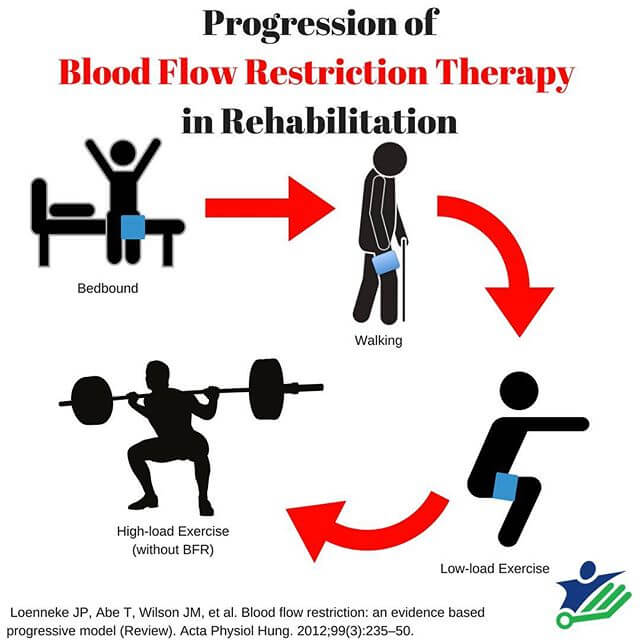Customized blood circulation constraint rehab training (PBFR) is a game-changing injury healing therapy that is producing significantly positive results: Diminish atrophy and loss of strength from disuse and non-weight bearing after injuries Increase strength with only 30% loads Increase hypertrophy with only 30% loads Improve muscle endurance in 1/3 the time Improve muscle protein synthesis in the elderly Improve strength and hypertrophy after surgical treatment Improve muscle activation Increase growth hormonal agent actions.
Muscle weak point frequently takes place in a variety of conditions and pathologies. High load resistance training has actually been revealed to be the most effective methods in improving muscular strength and acquiring muscle hypertrophy. The issue that exists is that in specific populations that require muscle reinforcing eg Chronic Pain Patients or post-operative clients, high load and high intensity workouts might not be medically suitable.
It has actually been used in the fitness center setting for some time however it is acquiring appeal in scientific settings. BFR training was initially developed in the 1960's in Japan and known as KAATSU training.
It can be used to either the upper or lower limb. The cuff is then inflated to a particular pressure with the objective of obtaining partial arterial and total venous occlusion. Muscle hypertrophy is the increase in diameter of the muscle as well as an increase of the protein material within the fibers.

Muscle stress and metabolic tension are the 2 primary aspects accountable for muscle hypertrophy. The activation of myogenic stem cells and the raised anabolic hormonal agents result in protein metabolism and as such muscle hypertrophy can occur.
Development hormonal agent itself does not straight cause muscle hypertrophy however it assists muscle healing and thus potentially facilitates the muscle strengthening process. The build-up of lactate and hydrogen ions (eg in hypoxic training) further increases the release of development hormonal agent.
Myostatin controls and inhibits cell growth in muscle tissue. It requires to be basically shut down for muscle hypertrophy to happen. Resistance training results in the compression of blood vessels within the muscles being trained. This triggers an hypoxic environment due to a decrease in oxygen shipment to the muscle.
When there is blood pooling and an accumulation of metabolites cell swelling takes place. This swelling within the cells causes an anabolic reaction and results in muscle hypertrophy.
The cuff is placed proximally to the muscle being exercise and low strength exercises can then be carried out. Since the outflow of blood is limited utilizing the cuff capillary blood that has a low oxygen material collects and there is an increase in protons and lactic acid. The very same physiological adjustments to the muscle (eg release of hormones, hypoxia and cell swelling) will occur during the BFR training and low intensity exercise as would accompany high intensity workout.
( 1) Low strength BFR (LI-BFR) leads to a boost in the water material of the muscle cells (cell swelling). It likewise speeds up the recruitment of fast-twitch muscle fibers. It is also assumed that once the cuff is gotten rid of a hyperemia (excess of blood in the capillary) will form and this will cause further cell swelling.
These increases resembled gains obtained as a result of high-intensity workout without BFR A study comparing (1) high intensity, (2) low strength, (3) low and high strength with BFR and (4) low intensity with BFR. While all 4 exercise regimes produced increases in torque, muscle activations and muscle endurance over a 6 week duration - the high strength (group 1) and BFR (groups 3 and 4) produced the best effect size and were equivalent to each other.